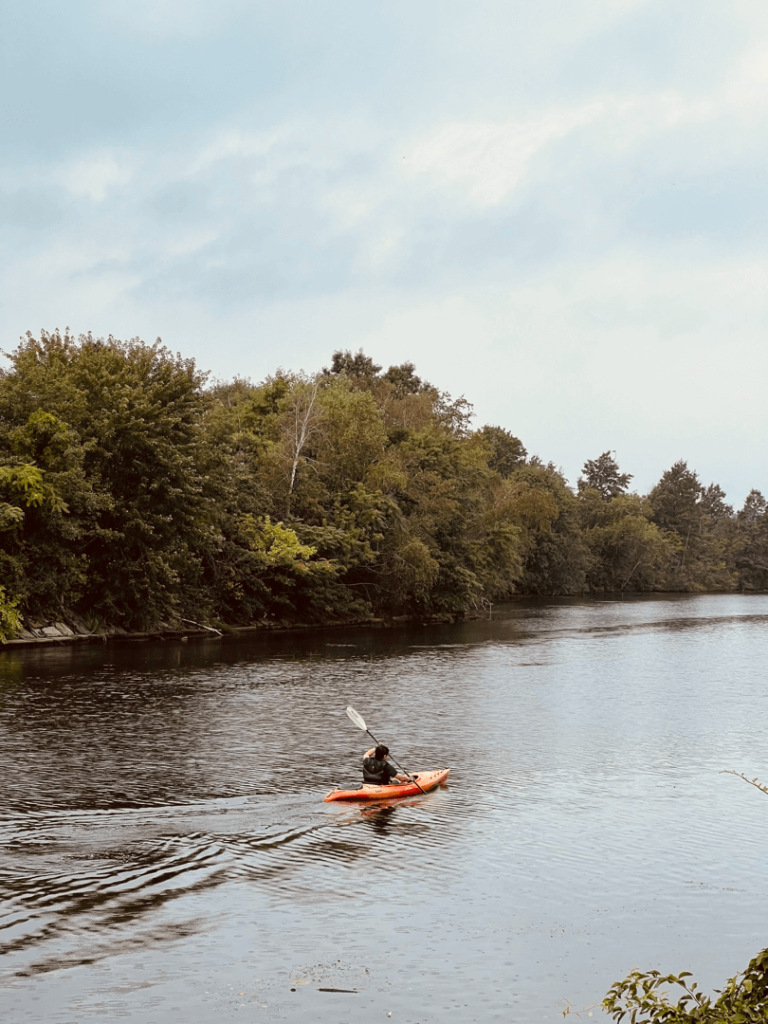Staying safe on the water
The USA has 3.5 million miles of rivers, 95,000 miles of shoreline and is home to 3 of the top 5 largest lakes in the world. Kayaking and canoeing are fantastic ways to explore the beauty of these areas.
But when you venture out onto the water, preparation, proper gear, and responsible conduct are essential to a safe and enjoyable experience. Remember that your actions not only impact your safety but those of others, including emergency services.
One of the most important measures recommended by the NPS is to leave a float plan with someone on land, especially if you’re paddling solo.
Preparation becomes especially important when you paddle in remote locations with limited or non-existent cellular coverage. There are a range of satellite-enabled devices, SOS beacons and communicators available on the market to provide a backup connection when out of cell service.
The motorola defy satellite link is an affordable, lightweight and waterproof option. Here’s Luke aka KayakHipster giving his analysis of the motorola defy satellite link:
There are many online resources for paddle safety, including golden rules and tips from the American Canoe Association, but here’s a summary of how to prepare for a great time on the water.
Some things to consider before venturing out:
- Accessibility: Seeking out a quiet, secluded spot to paddle can make it harder for first responders to reach you in an emergency, meaning long waiting times for rescue.
- Changing Conditions: Water conditions can change rapidly, particularly in tidal areas. Sudden weather changes, strong currents or unexpected obstacles can pose risks.
- Limited Communication: Cell towers are land-based, therefore being on large bodies of water is more likely to put you out of reach of cellular signal. It’s important to have other means of communication to raise an SOS.
- Disorientation: If you lose sight of the shore, you can easily lose your bearings or be pushed off course by currents. It’s a good idea to give someone back on land the means to track your location or be alerted if you deviate from your intended route.
“Kayaking is a fantastic way to explore remote, hard to reach locations. Communication is one of the pillars of safety when we’re out paddling — especially when we don’t have access to cell coverage. The motorola defy satellite link is a great tool to keep that communication channel open, and allows us to maintain contact with loved ones for a simple check-in or note with our phone, as well as send an emergency SOS directly with the device.”
Staying Safe and Being Responsible:
- Know The Water: Research the conditions you will be paddling in and any specific challenges they could present, e.g. riptides and currents.
- Share Your Plan: This should include your name, type of boat/equipment used and your planned route and schedule. Set a return time so someone on land knows when to raise an alarm if you don’t return.
- Pack Essential Gear:
- Personal Flotation Device (PFD): Always wear a properly fitted PFD. It’s your best defense against unexpected capsizing or falling into the water.
- Navigation Tools: Knowing your location and planned route is essential. Carry maps, compasses, or GPS devices, and think about how to keep them dry.
- Communication: In areas with poor cell reception, bring a VHF marine radio, satellite communicator, a whistle for signalling – ideally all 3.
- Safety Kit: Pack a first-aid kit, a throw rope for rescues, and a repair kit for your watercraft.
- Proper Clothing: Dress in layers and wear appropriate clothing for the conditions. A wetsuit or drysuit can be lifesaving in cold water.
- Weather Awareness: Check the weather forecast before heading out and be prepared for changes. Sudden storms or winds can make paddling challenging and dangerous.
- Wildlife Etiquette: Respect wildlife from a distance. Avoid disturbing nesting birds or marine life. Be cautious around animals that could be potentially dangerous, such as alligators in some areas.
- Leave No Trace: Follow Leave No Trace principles for waterways. Dispose of trash properly and avoid damaging sensitive shorelines or aquatic habitats.
- Boating Etiquette: Understand and follow local regulations. This includes speed limits, no-wake zones, and navigation rules to prevent collisions.
- Paddling Skills: Hone your kayaking or canoeing skills, especially if you’re new to the activity. Learn how to perform a self-rescue and assist others in case of capsizing.
- Stay Hydrated and Nourished: Bring enough water and snacks for your trip. Paddling can be physically demanding and you may not realize how much energy you’re expending.
- Emergency Preparedness: Know how to use your communication or SOS devices. If capsized, stay with your watercraft to increase visibility. Signal for help if needed.

Above all, make safety YOUR responsibility. Communication or SOS tools could save your life in an emergency. In remote areas, a satellite-enabled device like the motorola defy satellite link is a simple way of preparing for all eventualities.

